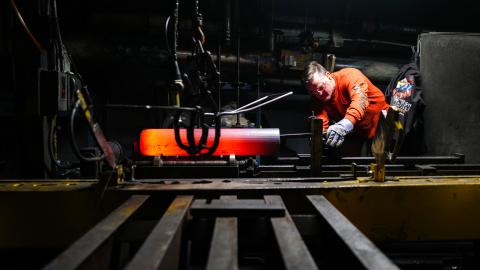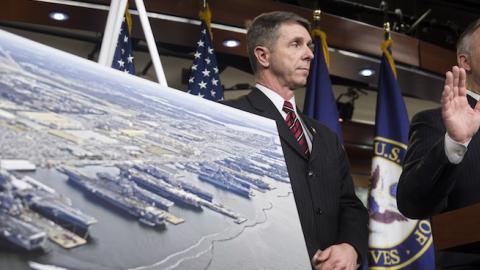China and Russia are modernizing their armed force, especially their navies. The former’s progress over the past decade and a half is astonishing.
In 1999 the PLAN fleet consisted of 50 land-based fighters, 14 surface ships, and 10 submarines. This provided no significant ability to deny access to the U.S. Navy in the West Pacific.
By 2016, the PLAN’s naval aviation fighter force had grown to 900 planes. Its surface fleet had increased to 88 combatants as well as a single aircraft carrier. Its attack submarine force numbered 60 boats. The range at which the PLAN could contest, if not control, the access of other navies’ ships reached just over 900 miles from China’s coast.
Official and unclassified U.S. sources anticipate that by 2020 China will have two carriers, the same number of surface combatants and attack subs as in 2016, and 375 ballistic missiles which will help expand China’s anti-access/area-denial capability to slightly less than 2,200 miles.
During the same period, the U.S. remained at its current level in the region of a single aircraft carrier, 175 combat aircraft, and 12 surface combatants. There is one exception: U.S. subs will probably increase from 4 boats in 1999 to 10 in 2020. Also, during the same time the U.S. Navy as a whole shrank by more than 13 percent, from 314 ships to its current size of 272 combat vessels.
The possibility of conflict between the world’s heavily armed states is increasing as China, Russia, North Korea, and Iran improve their ability to challenge the international order with swift, powerful action directed at such nearby strategic targets as the Senkaku Islands, Taiwan, South Korea, and the Strait of Hormuz. A U.S. Navy configured to deliver an immediate and lethal response is a necessary deterrent to the increasing risk of a spark that sets off great power conflict. Sudden force is very different from the months-long build-up that was called Desert Shield. A repeat of Desert Shield would be useless against any precipitous Chinese move in the first island chain. Immediate response requires significant changes to future platforms, weapons, tactics, and organization.
In any event, the U.S. Navy must reverse the decline in fleet size of recent decades to meet the nation’s increased dependence on naval force to deter or if need be, defeat a powerful enemy at a distance from our borders. President-elect Trump’s support for a 350-ship fleet would accomplish this. His October proposal for a significant partnership with the defense industrial base that supports naval shipbuilding and repair is precisely what is needed to turn around American seapower’s declining fortunes.
Mr. Trump deserves credit for recognizing the problems that face the Navy and will join the ranks of America’s distinguished chief executives by achieving his goal. Those who supported other candidates for the Republican nomination or subsequently opposed him and yet are dismayed by the current administration’s impoverishment of U.S. defenses should support Mr. Trump’s efforts to rearm America, in particular, to maintain and add to the U.S.’s global naval superiority.
There is no one better prepared to carry out the president-elect’s stated goal than House Armed Services subcommittee chairman Randy Forbes, (VA-4). Forbes has been a strong supporter of powerful naval forces throughout and before his chairmanship. His advocacy on behalf of naval strategic planning is bearing fruit as the current Chief of Naval Operations’ increased emphasis on strategy demonstrates. An effective Navy Secretary must know Congress and how to work with it. No one else who has become Navy Secretary has possessed a greater understanding of the national legislature or more finely honed skills in working with members on both sides of the aisle.
As deputy Undersecretary of the Navy, I saw what could be accomplished by strong naval leadership under President Reagan. The maritime strategy that helped end the Cold War, the large increase in shipbuilding that supported the strategy and such common sense measures as saving taxpayer dollars by building two aircraft carriers simultaneously were all difficult to achieve but proved enormously effective.
With his personal support, President Trump can change the Pentagon from an over-centralized, red-taped and unaccountable bureaucracy into an efficient organization that applies dollars saved to increased security for the nation. The new president will need the help of an experienced and knowledgeable Secretary who can transform the Commander-in-Chief’s ideas into facts. That would be Randy Forbes.

















